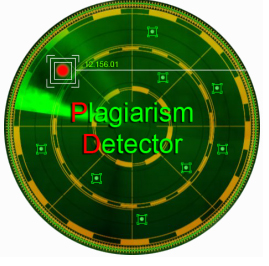THE QUALITY OF STUDENTS’ PARAPHRASES CASE STUDY AT STBA PRAYOGA
Abstract
This study was pointed at getting the information related to students’ quality in paraphrasing seen from four dimensios of paraphrasing assessment. The subjects of the investigation were chosen understudies of STBA Prayoga who were in the 6th semester and had finished taking the sequence of writing classes. The instrument utilized within this study was a test on paraphrasing a text. The components that were used to assess students’ writing were semantic completeness, lexical similarity, syntactic similarity, and paraphrase quality. The students writing then scored by using rubric which was categorized into 4 (excellent), 3 (satisfactory), 2 (below avarage), and 1 (ineffective). The study showed that students paraphrase quality was on ineffective level. It was anticipated that more concerns related students’ rewording ought to be given.
Key word: lexical similarity, paraphrase quality, semantic completeness, syntactic similarity.
References
Attardo, S. (2011). Humour. In J. Zienkowski, J. Ostman, & J. Verschueren (Eds.), Discursive Pragmatics (pp. 135-155). John Benjamins Publishing Company.
Attardo, S. (2020). The Linguistics of Humour: An Introduction. Oxford University Press.
Bucaria, C. (2004). Lexical and Syntactic Ambiguity as a Source of Humour: The Case of Newspaper Headlines (postgraduate thesis). Youngstown State University, Ohio.
Chang, C. S., & Mutty B. (2022). Lexical And Syntactic Ambiguity in The Vaccine News Headlines of The Star. International Journal of Education, Psychology and Counseling, 7(47), 228-246.
Chinelo, J. E., & Macpherson, N. A. (2015). A Stylistic Exploration of Lexical Ambiguity in Newspaper Headlines. Humanity & Social Sciences Journal, 10(2), 63-72.
Demir, C. (2020). Lexical and Structural Ambiguities in Student Writing: An Assessment and Evaluation of Results. African Educational Research Journal, 8(3), 100-108.
Jannah, N. (2021). Lexical and Syntactic Ambiguity in The Business News of BBC News (undergraduate thesis). Universitas Islam Negeri Maulana Malik Ibrahim.
Kreidler, C. W. (1998). Introducing English Semantics. Routledge.
Krikmann, A. (2006). Contemporary Linguistic Theories of Humour. Folklore, Electronic Journal of Folklore, 33. Folk Belief and Media Group of Estonian Literary Museum, Tartu.
Makroum, R. A. A. (2021). Lexical Ambiguity and Verbal Humour in Some English Jokes and Riddles. Scientific Journal of Faculty of Arts, 10(3), 81-106.
Nwala, A., & Umukoro, B. (2017). Investigating the Meaning of Newspaper Headlines: The Issue of Ambiguity. African Research Review: An International Multi-Disciplinary Journal, 11(3), 87-96.
DOI: https://doi.org/10.33365/llj.v5i1.5225
Refbacks
- There are currently no refbacks.
Linguistics and Literature Journal
Published by Universitas Teknokrat Indonesia
Organized by Faculty of Arts and Education
Jl. Zainal Abidin Pagaralam, No.9-11, Labuhanratu, Bandarlampung, Indonesia
Telepon : 0721 70 20 22
W : http://jim.teknokrat.ac.id/index.php/linguistics_and_literature/index










